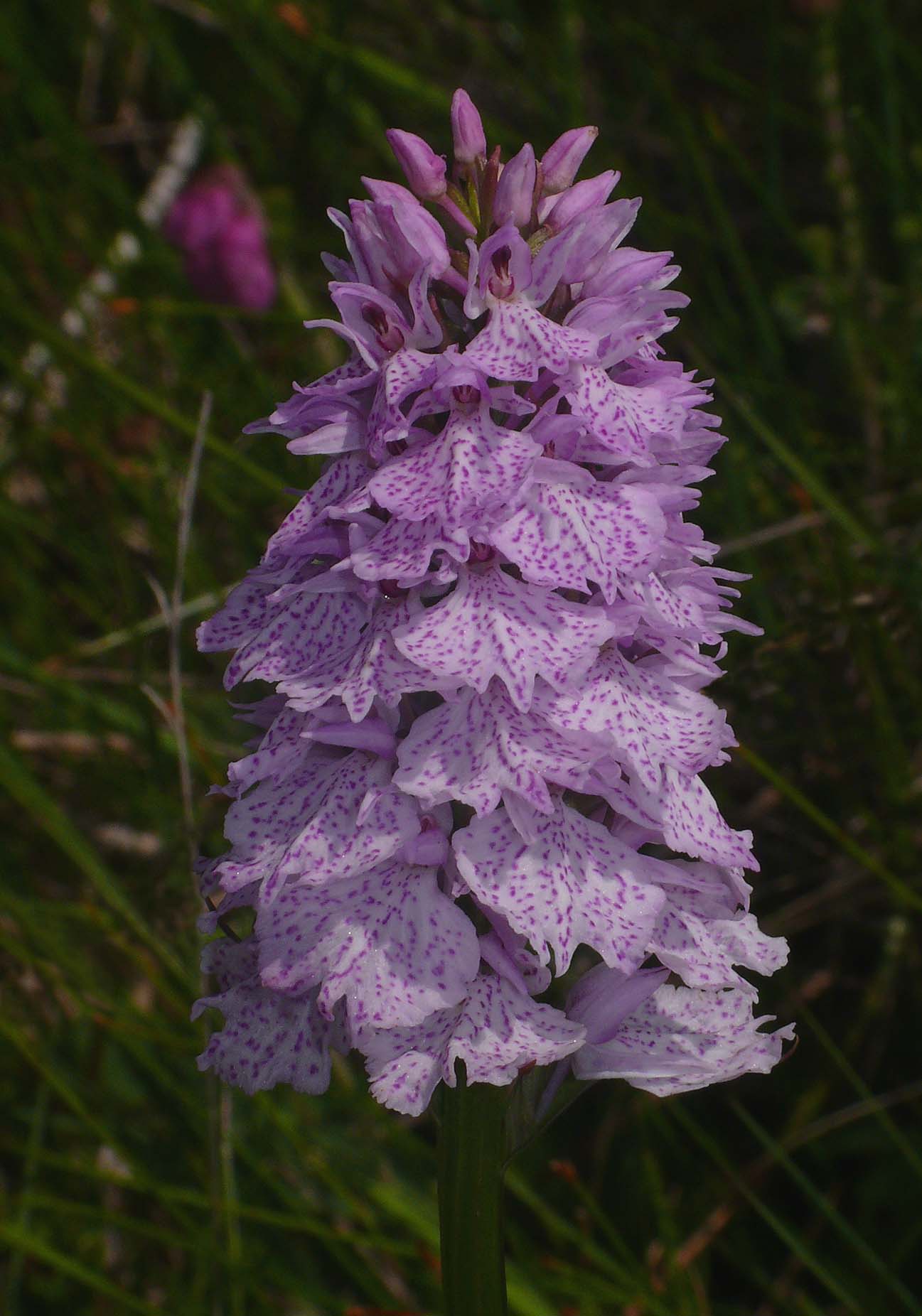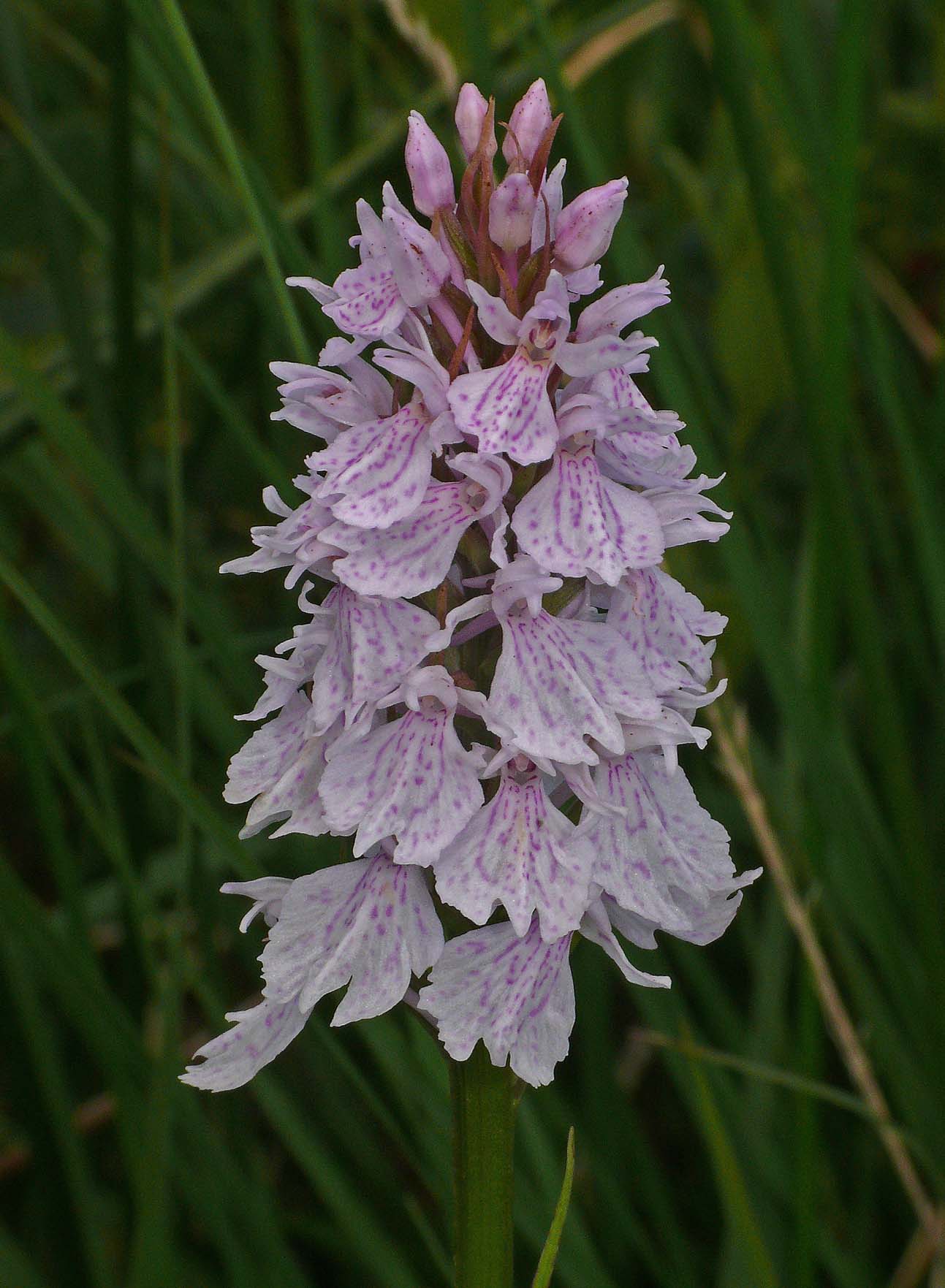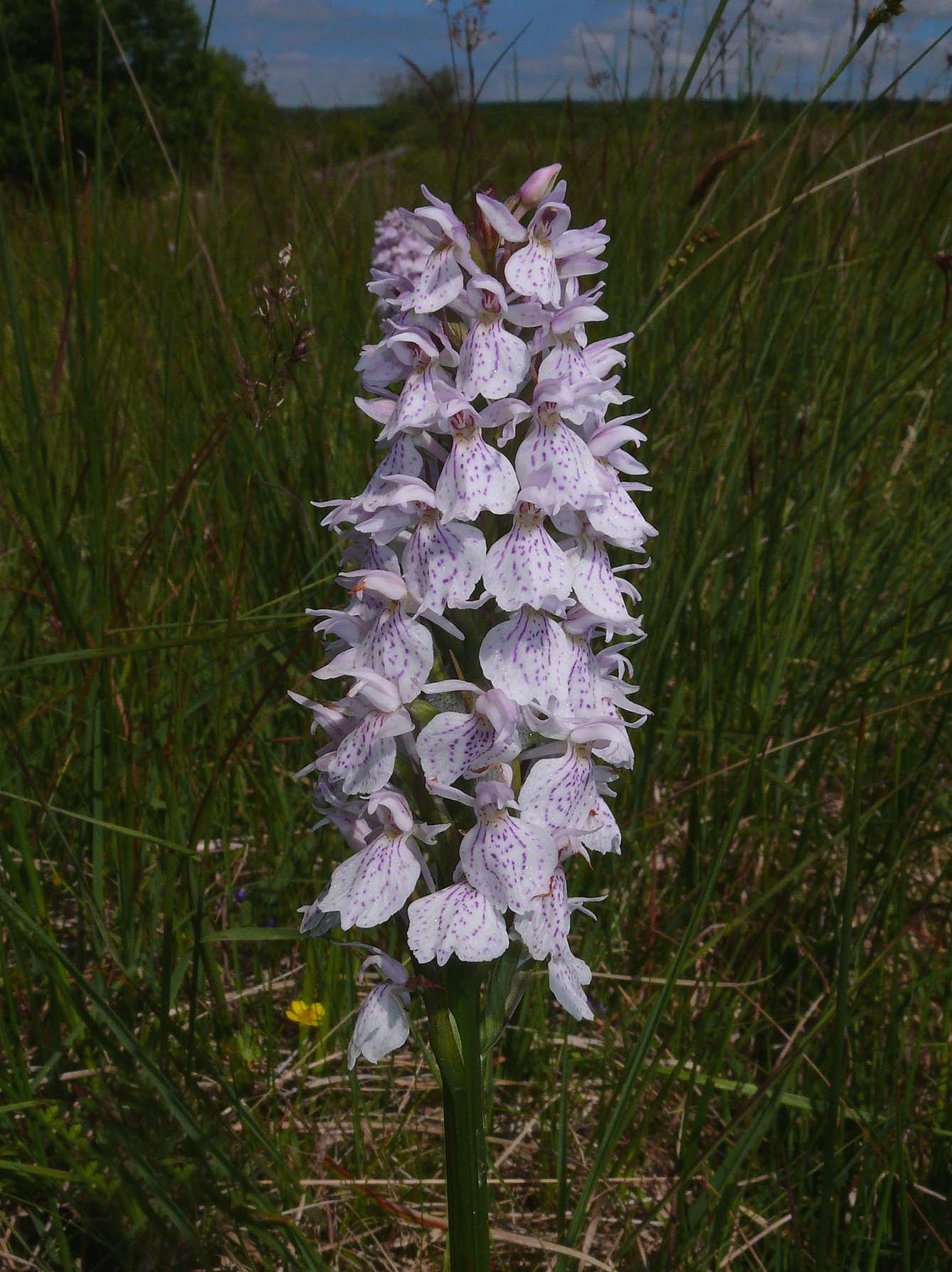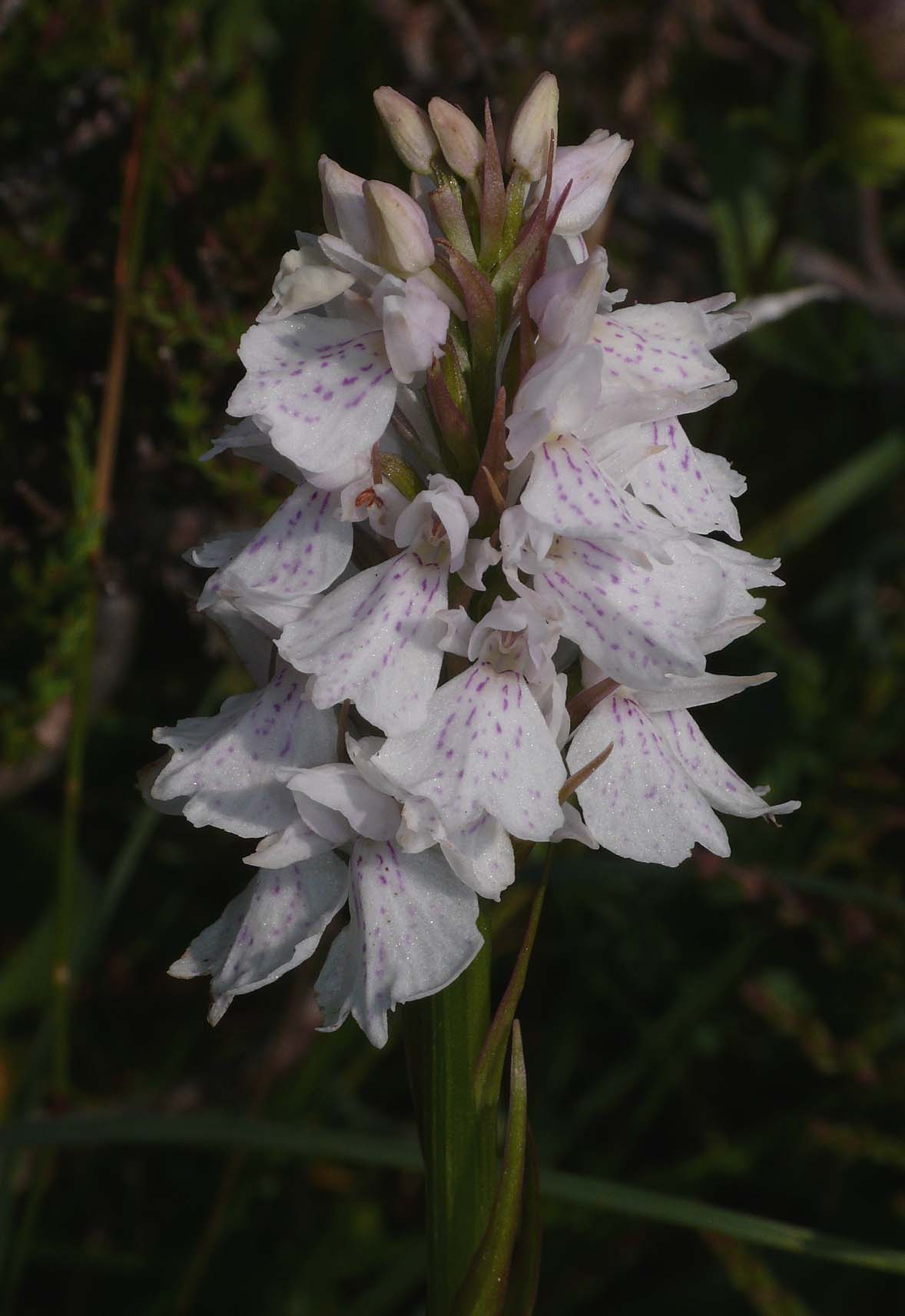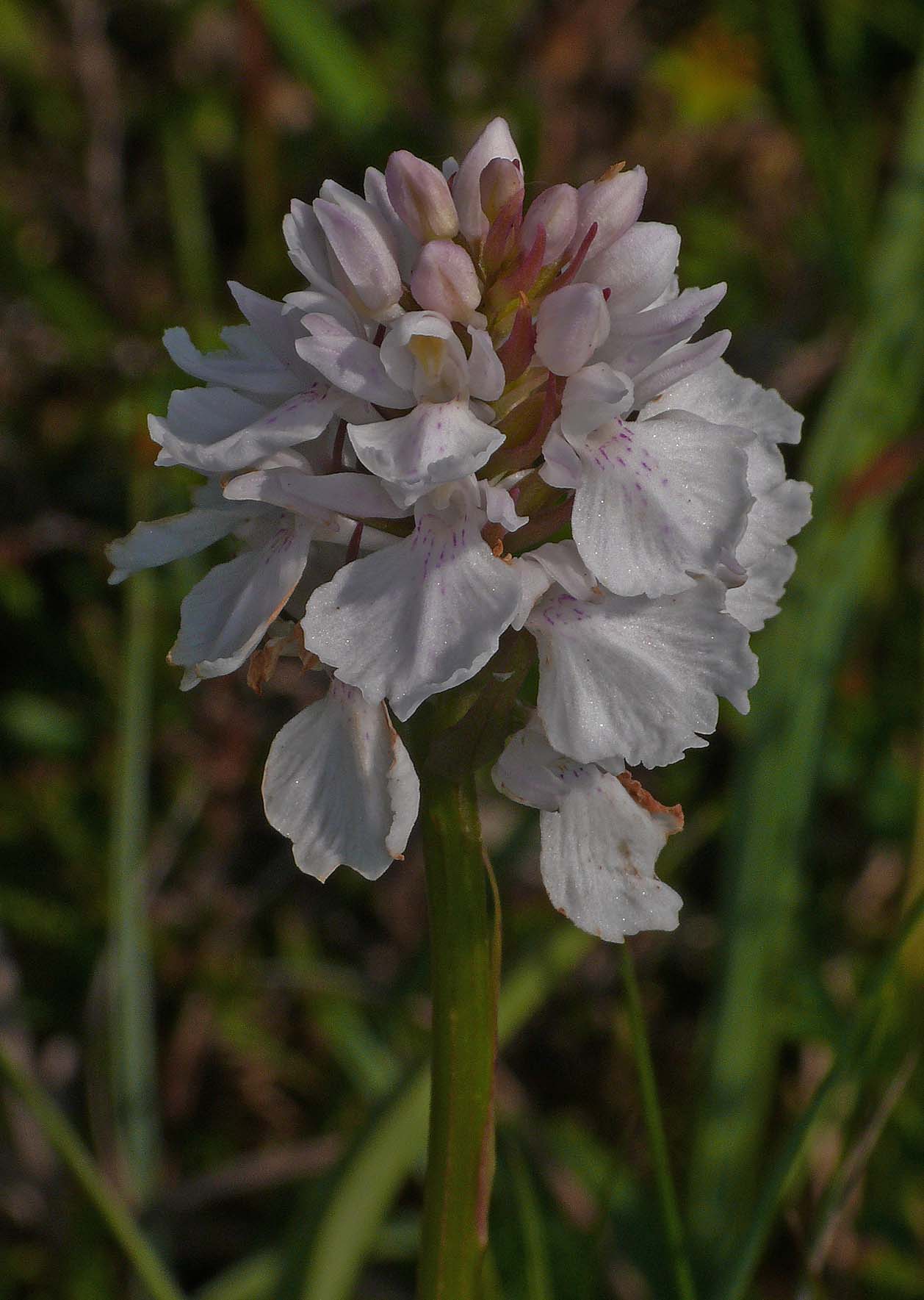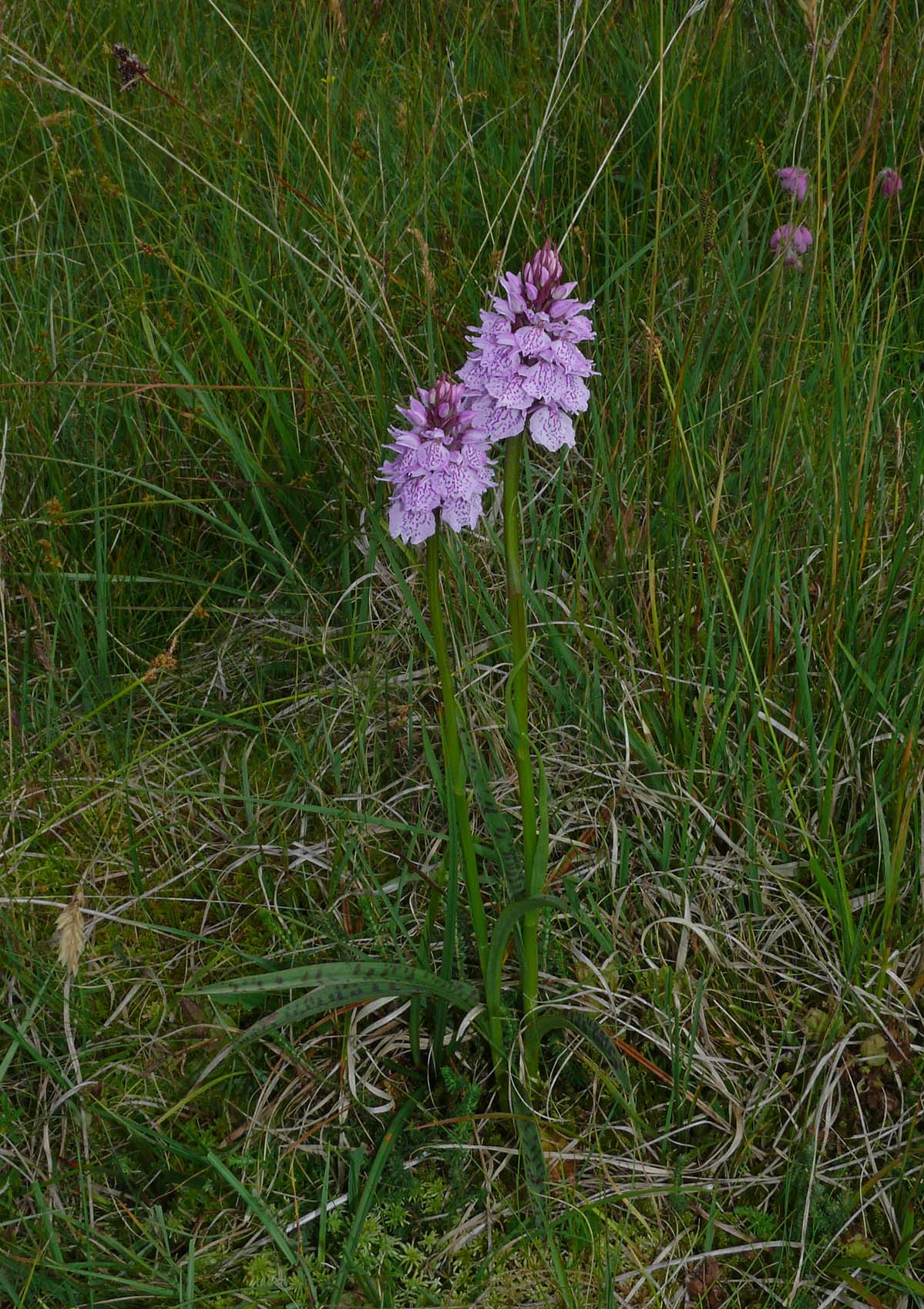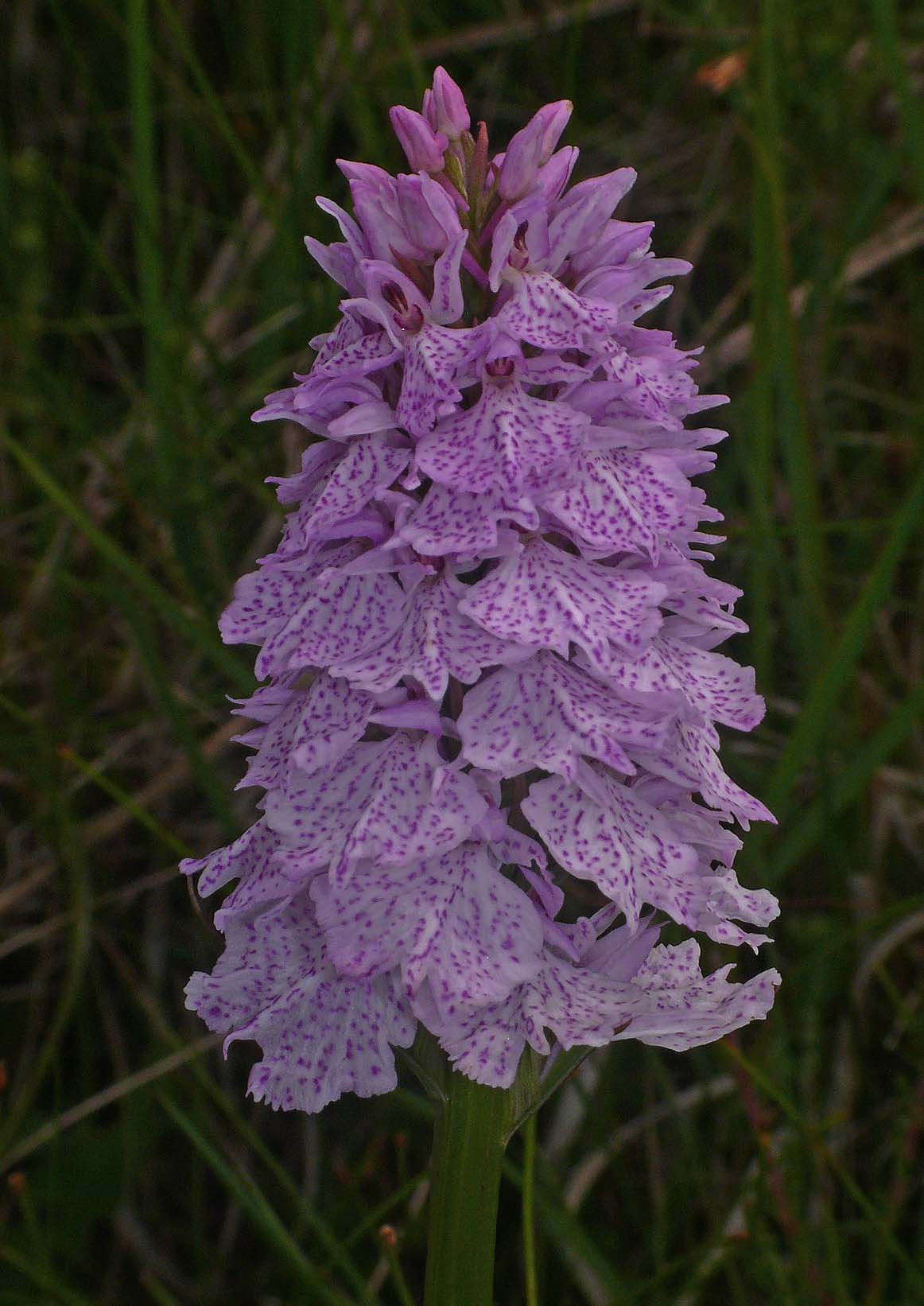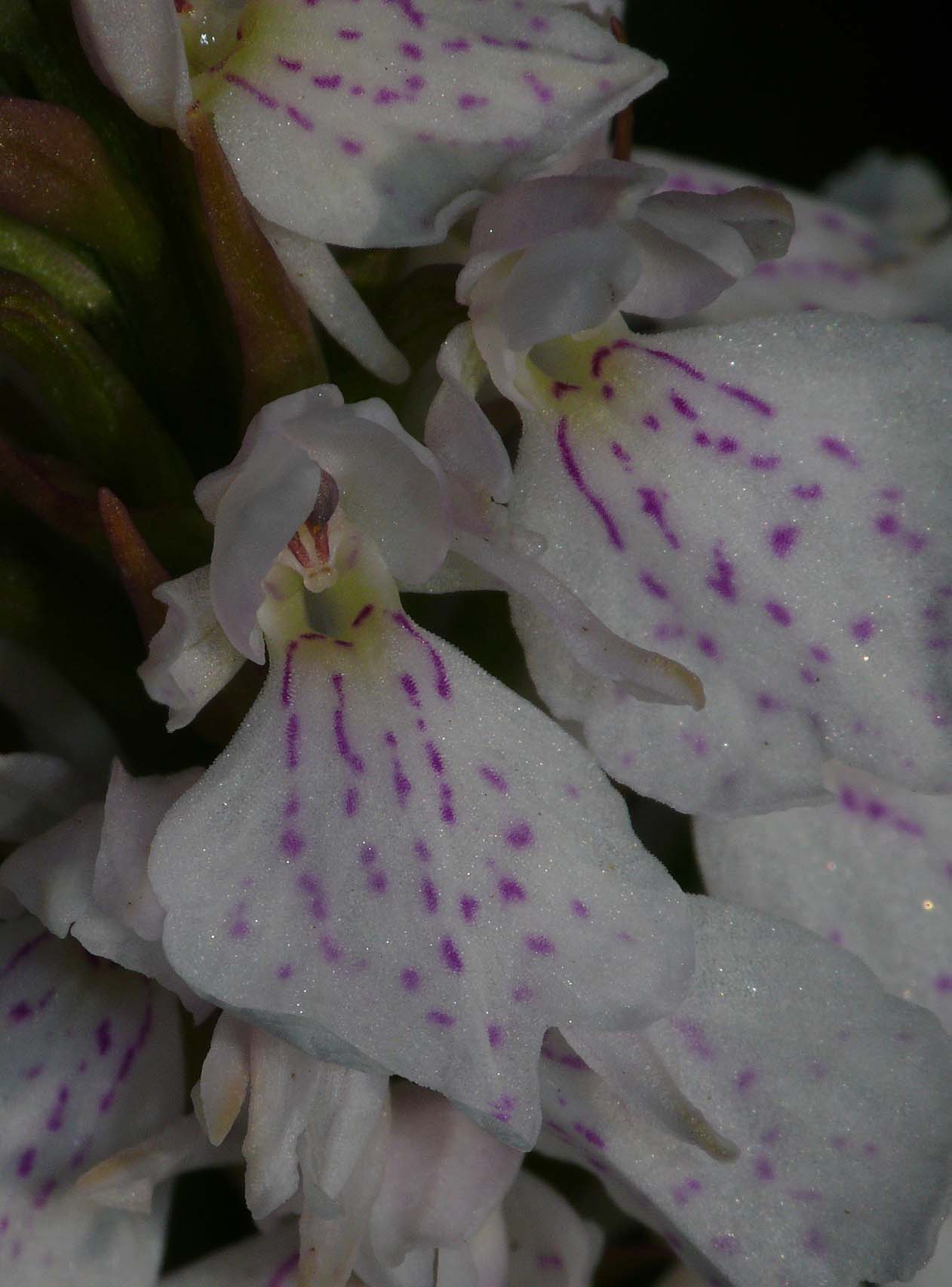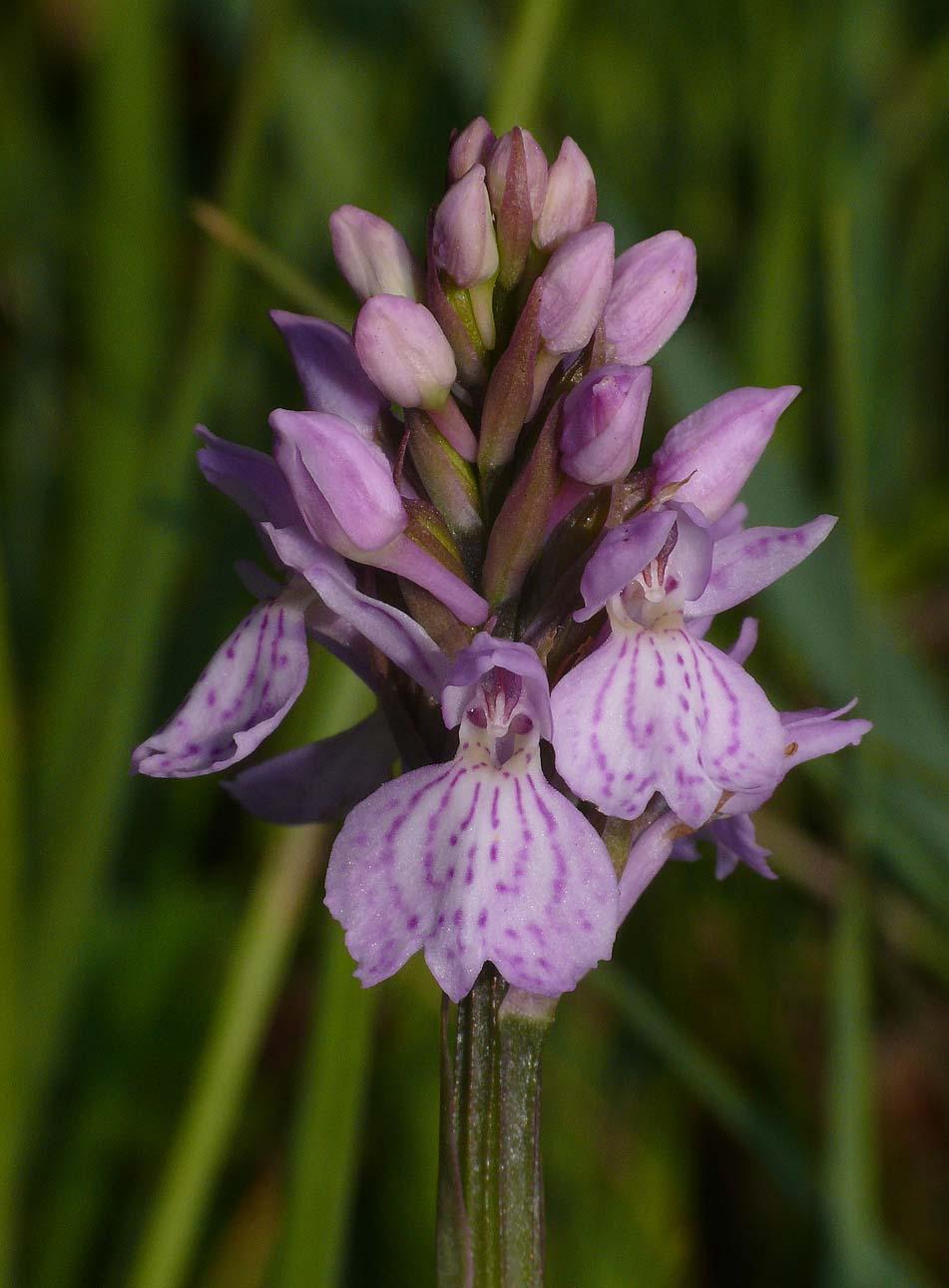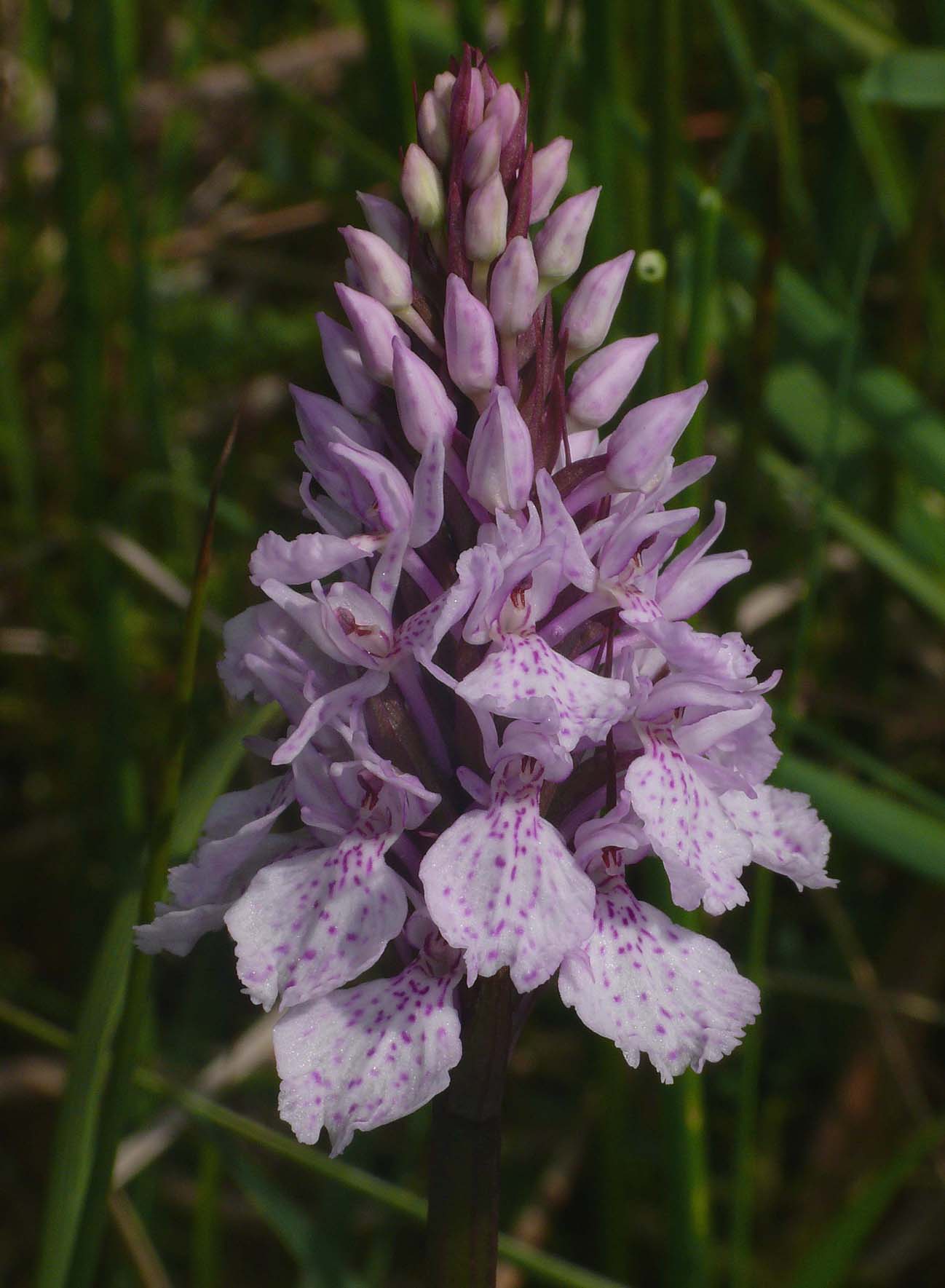D. ericetorum was first described from Bournemouth, England (The New Forest) by E.F.Linton in 1900 and its name refers to the heather that so often accompanies this orchid in its preferred acidic habitats.
This species is very closely related to D. maculata
and unsuprisingly therefore, bears a close
resemblance to this taxon. This similarity can be a source of
confusion, particularly as the two species
may be found growing side by side. Whilst D. maculata has a greater tolerance of less acidic substrates and may therefore share fringe habitat with the similar D. fucshii, there is little risk of D. ericetorum being mistaken for this species as it is strictly a plant of acidic conditions.
Where D. ericetorum and D. maculata
grow in association, intermediate populations can be established and these will often create problems with identification.
There are however many regions where D. ericetorum
may be found in pure colonies and in huge numbers.
This species can be a varied one but there are several features which will generally separate it from the
more widespread Heath Spotted Orchid (D. maculata) :- 1. The plant is more spindly and its leaves thinner
and more pointed. 2. The lip is larger and its markings much more subtle, usually consisting of a
combination of dots and short
lines which rarely form complete loops. Some plants may lack any of
these markings at all. (See photo 5).
D. ericetorum has a wide
distribution in Western Europe and flowers from June to the beginning
of August. The photo come from Northern England and
Scotland, dating from the middle of July.
